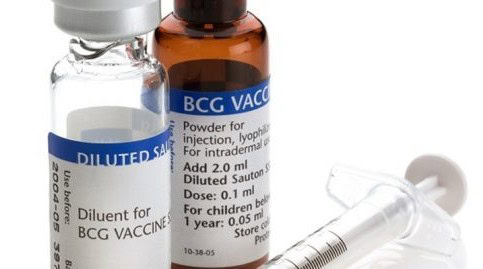BCG Vaccine Shows Promising Signals of T1D Efficacy
Exploring history and development of diabetes applications for the BCG vaccine which has 100 Years of safe, worldwide use

We spoke with Denise Faustman, MD, Ph.D., Director of Immunobiology Massachusetts General Hospital, and Associate Professor of Medicine Harvard Medical School. The following is a summary of the research that she and her team are working on.
Early Islet Trials
I started my career doing islet transplants 25 years ago and was involved in the first islet transplant trials in the US.
Sadly, we learned that when doing islet transplants as part of kidney replacements, the kidney lived while the islets died. The cause was that the underlying bad white blood cells which remained in the body sensed the new islets and reignited their autoimmune response, killing the new islets just as effectively as they had initially killed the beta cells in the pancreas.
This discovery drove us to try to understand bad white blood cells so we could get rid of the underlying disease. Other transplant efforts discovered the same thing. For example, liver transplants to people with autoimmune hepatitis result in the new liver becoming diseased.
Basic Autoimmune Research
We found in human and mouse research that defects in white blood cells causing disease had a signaling pathway that we could drug. Autoimmune treatment strategies often aim to target all white blood cells but this pathway suggested we could perhaps kill only the bad white blood cells and also, perhaps in mice & humans, induce the good white blood cells that quiet the immune system, i.e. regulatory T cells (T regs). This defective signaling pathway could be changed from the cell surface by exposing white blood cells to Tumor Necrosis Factor (TNF), a protein that had the double attribute of killing the bad white blood cells while proliferating the good cells.
TNF, however, was too expensive to use as a therapy for diabetes.
We looked for generic drugs that stimulate TNF. That is how we found BCG.
BCG Vaccine

The Bacillus Calmette–Guerin (BCG) vaccine is a microorganism developed as a vaccine for tuberculosis (TB) more than 100 years ago and has also been used as therapy for bladder cancer for the last 40 years. BCG is still the most commonly used vaccine in the world with 90 million newborn infants vaccinated annually. Interestingly, the only places in the world that don’t routinely use BCG vaccine are the US, Europe, and Australia.
BCG vaccine is a live, attenuated, microorganism derived from cows that have TB and then cultured in lab settings.
This animal-derived culture approach is old-school medicine.
And it is cheap. For example, the complete BCG dosing plan for bladder cancer costs $156 per dose.
Hygiene Hypothesis
The Hygiene Hypothesis was developed in the UK in the 1960s. It found that autoimmunity was disproportionately on the rise in wealthier families, living in clean houses, with fewer children and good access to medical care.
According to the Hygiene Hypothesis, limited early childhood exposure to infectious agents, symbiotic microorganisms, and parasites increase susceptibility to allergic diseases by suppressing the natural development of the immune system.
Everything and everywhere in modern America and Europe is clean and controlled. We have become a Purell Culture.
A super-clean environment is a better explanation of the growth in autoimmune diseases than saying human genetics have drifted. It is the environment that has changed.
Why Isn’t BCG Vaccine Standard in the US and Europe?
The incidence of tuberculosis (TB) is low in North America and Europe. A purified protein derivative (PPD) skin test is a test that determines if you have TB. If however, you had the BCG vaccine, you would get a false positive from the PPD skin test.
False positives are inconvenient, and public health policy changed overtime to stop recommending BCG vaccine in Europe. This vaccine has never been a recommended vaccine in the US. As a result, demand dropped, and FDA/EMA regulated sources stopped producing the vaccine. Without FDA/EMA regulatory control, different strains of BCG proliferated around the world. Not all strains, however, are therapeutically equivalent and the reliability of the BCG vaccine diminished.
New BCG Vaccine Source
It took five years for us to locate a new BCG vaccine source that followed FDA Good Manufacturing Practices and used the best testing. This source produces the Tokyo strain which shows a good effect in stimulating TNF. Trials are underway to see if this strain also has efficacy in suppressing autoimmunity.
Status of T1D Trials
Generic drugs with good records of safety can, in general, move through clinical trials at a faster pace since safety is always a major concern for any “new” drug. All trials, even generic trials have to, of course, prove efficacy.
Phase I Trial
Our Phase I T1D trial began over ten years ago, and we still follow each participant. The BCG treated participants all had T1D for at least 20 years, and their C-peptides were undetectable with no residual pancreas insulin production function. We wanted the people who had established type 1 diabetes.
Initially, this trial was limited to 22 weeks, and the results were modest, clinically-detectable but small changes in C-peptide and the dramatic death of autoreactive T cells. Induction of good T cells occurred but there was no change in insulin usage nor HbA1c levels. This was a success as we showed the mechanisms we were looking for and then we were able to move to Phase II.
Two things happened next. First, we had a disruption in our supply of BCG and spent nearly five years getting a reliable source of BCG back online. Second, a study in Italy using BCG therapy for multiple sclerosis showed that it took two to three years for BCG to have its full and important clinical impact. We reopened our Phase I study and started following the Phase I patients to see if there was a similar delayed clinical effect. To our pleasant surprise, we found that after three years the HbA1C’s of our participants returned to near normal.
In this first study, long-term diabetic subjects received at least two BCG vaccinations, but they do not experience the restoration of normal blood sugars until about three years later. Once the blood sugars return to normal, however, the therapeutic effect endures beyond five years.
The interesting outcome is that BCG restored patient blood sugars to near normal without increasing their ability to produce insulin naturally in these very long-term subjects. We think this is due to resetting their glucose metabolism to a high glucose utilization mechanism in their lymphoid system. These findings support the Hygiene Hypothesis and indicate that mycobacterial reintroduction in modern humans will improve their immune and metabolic functions.
Phase II Trials
Our Phase II T1D trial is now fully enrolled with 150 adults. It is a five-year study that is double-blind and placebo-controlled. We have about three years to go.
We are simultaneously working toward starting two other Phase II Trials.
- Phase II Pediatric Trial so we can provide parents with diabetic children a path forward
- Phase II Expanded Access Trial
The Expanded Access Investigational New Drug (IND) process originated in the 1990s by AIDS activists who wanted access to potentially life-saving generic drugs while they were still being tested in clinical trials. It allows many more people to participate in the Phase II Trial. These patients will be “open label” and 100% of participants would get the BCG vaccine. We are working hard to set up the trial and define the costs for patients to participate.
We are considering 500 to 1,000 participants in the first stage of the Expanded Access trial, but as we begin to explore options there may be opportunities for more. Again, money always drives these generic drug development steps. We may be able to get support from forward-thinking health plans to help pay for patients to enroll.
Next Steps
Once all these Phase II trials are complete we should have enough data to make a convincing case to the FDA that BCG vaccine can be used to restore near-normal blood glucose in people with T1D. The Phase II trial is much bigger and includes a greater range of type 1 diabetics including patients that are younger than the Phase I patients. It will be interesting to see if these patients can regenerate some of their endogenous insulin production, which is why we are carefully tracking C-peptide as well as HbA1c. We are also very excited to start a pediatric trial for the same reason.
Additional Phase II trials will be required to determine when to revaccinate people.
There is now global data suggesting that prophylactic use of BCG vaccine among high-risk T1D children could become an accepted practice especially because of the low risk associated with BCG’s solid safety profile.
Animal work has also shown that Type 2 Diabetes is also amenable to this therapy. Clinical trials in humans will have to be done to move this work forward.